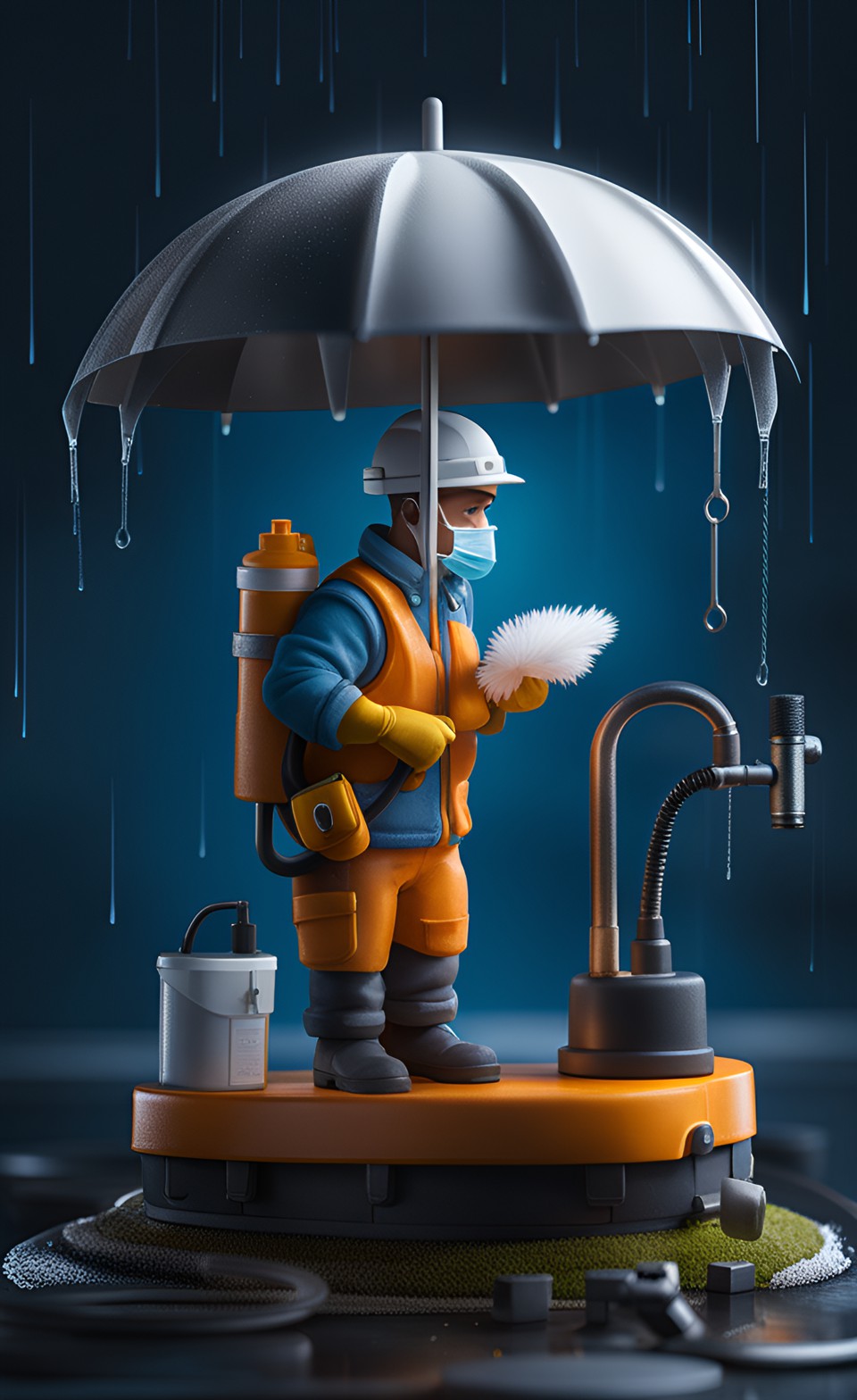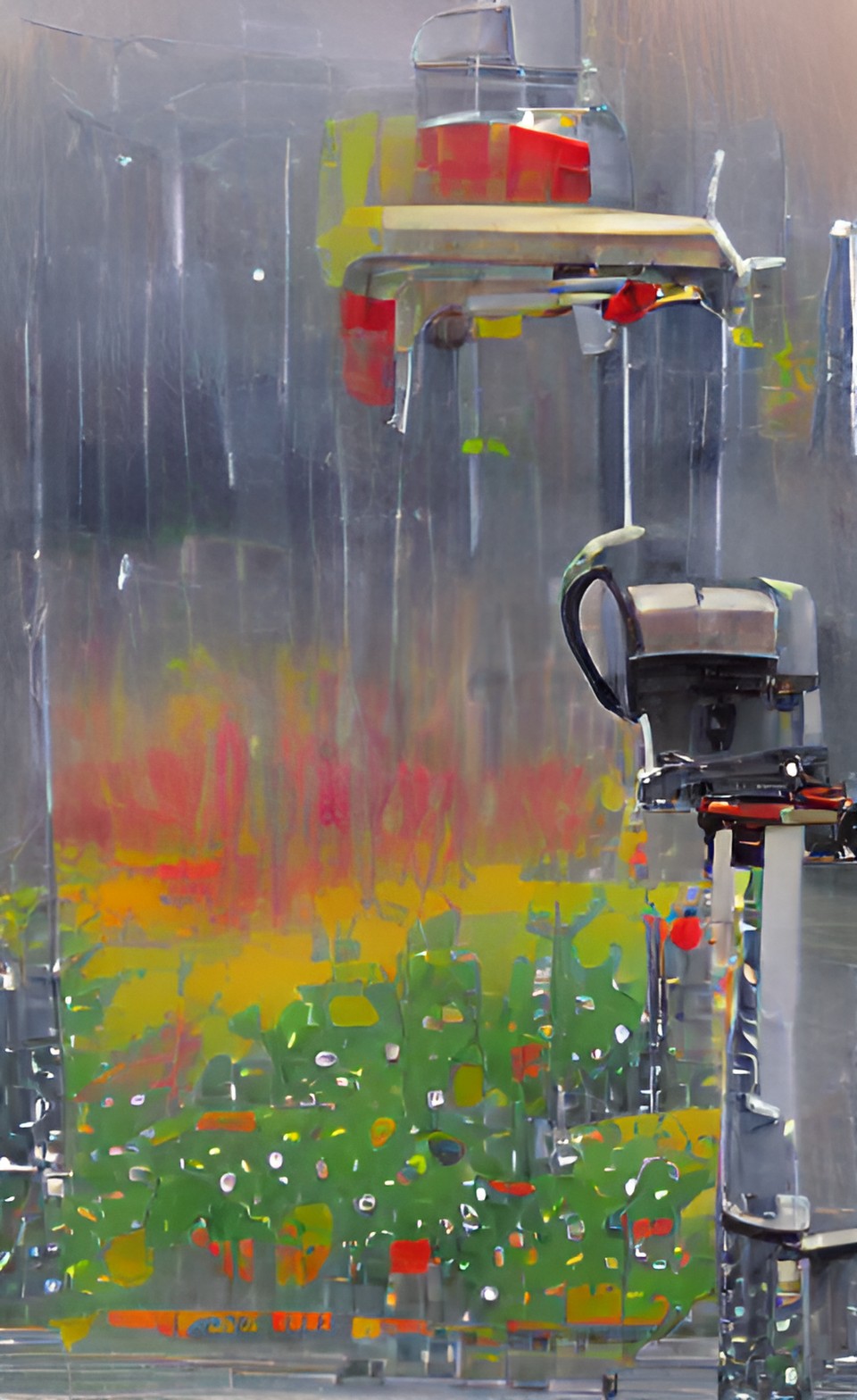- Air Homepage
- Alberta Air Quality
- Ambient Air Monitoring Equipment
- Precipitation Chemistry Monitoring
Data collection and precipitation chemistry monitoring in Alberta
The Alberta Air Monitoring Directive (AMD) section on Precipitation Chemistry Monitoring provides insight into how rain and snow samples are collected and studied. It also explains how to set up monitoring sites, select equipment, maintain sampling equipment, and prepare samples for analysis.
Ever wonder what scientists find when they analyze snow or rainwater? Check out how environmental experts uncover the chemical secrets hidden within every drop of Alberta's precipitation by following meticulous, step-by-step protocols. Using Alberta's Official Rain & Snow Sampling Protocol to decipher the downpour
If you're interested in learning about environmental science and data quality assurance plans for more representative air quality monitoring audits, this summary gives you a decent overview.
There are rules for people who collect and study rain and snow samples in Alberta, Canada. These are for people who design, set up, and manage these sites. These rules cover things like choosing equipment, collecting and handling samples, running the sites, analyzing samples in a lab, managing the data, and creating a monitoring network plan. In charge of a precipitation sampling site, you need a Standard Operating Procedure.
Here's a step-by-step guide to conducting precipitation chemistry monitoring, and why it's important to follow specific protocols. It is derived from the text in Section 5 of Chapter 4 of the AMD.
Here is a summary of the previous section (Section 3)
See all of AMD Chapter 4 here.
5.1 Site Selection
You can collect rain and snow samples on their own or alongside air monitoring stations. In Chapter 3 of the AMD, there are specific rules for choosing these sites. In your case, you need to evaluate each site based on the criteria for a background monitoring site from Chapter 3. A site might meet all the criteria, or it might not. A plan for precipitation chemistry monitoring should include the results of this evaluation.
5.2 Sampling Equipment Selection
To collect rain and snow samples, you need special equipment. It has a sensor that can tell when it's raining or snowing and opens up to collect samples. It stays closed when it's not raining. It's heated a little so it doesn't open when there's just dew, melting snow, or ice. To make sure your sample is complete, you use a standard rain gauge to measure how much wet stuff you've collected.
For this job, use a rain gauge that can detect as little as 0.2 millimeters of rain.
Make sure the equipment you're using is automatic and has a moving cover so you can collect samples from the air. It should also have a wetness sensor and surfaces that don't react with what you're measuring. When it's not raining, this equipment should protect the samples from contamination. Make sure your sample container is big enough to hold all the rain or snow you collect. To prevent contamination, the equipment's housing should be stainless steel.
Parts that touch the sample should be made of polyethylene, polypropylene, or Teflon, which won't react with what you're measuring. To keep snow from blowing out, the sample container should be twice as tall as it is wide. Cleaning and maintenance are easier when you can manually operate the equipment, especially when you need to remove parts.
5.3 Sampling Equipment Installation
Setting up the equipment right is crucial to preventing contamination and making sure everything works.
Install the precipitation sampling equipment like the manufacturer and AMD's Site Selection Chapter (Chapter 3).
At each precipitation sampling site, they should also set up a standard precipitation gauge, following the manufacturer's guidelines and the AMD's Site Selection Chapter. It might be necessary to place the standard precipitation gauge away from other precipitation sampling equipment to make sure it's in the right spot.
5.4 Sampling Equipment Operation and Weekly Maintenance
Here's how to operate and maintain the equipment:
- According to the manufacturer's instructions, the person in charge should operate and maintain the precipitation sampling equipment and standard precipitation gauge.
 Documented Standard Operating Procedures
Documented Standard Operating Procedures- They need to do these things on their weekly visits to the precipitation sampling site:
1. Remove any ice, snow, or debris from the precipitation sampling equipment's wetness sensor.
2. Make sure the wetness sensor is working.
3. Make sure the sensor grids are clean.
4. Make sure the sensor grid heater works.
5. Make sure the moving cover of the precipitation chemistry monitoring equipment is clean.
6. Make sure the precipitation sampling equipment's moving cover opens and closes smoothly.
7. Make sure all other components of the precipitation sampling equipment and standard precipitation gauge are working. - Weather, dust, and pollutants can dirty sensor grids. If necessary, clean them with a damp sponge or cloth and mild detergent. Wipe away any dry film on the grid.
- Touch the wetness sensor with a damp finger while the equipment is on to test it. It should open in 5 seconds and close in 120 seconds. They should consult the manufacturer's manual if it doesn't work.
- With the heater on, you can test its operation by placing your hand just above its surface and feeling the warmth.
- Precipitation sampling equipment should be prepared for each sampling period by rinsing the sample collection container and other surfaces that come into contact with precipitation twice with deionized water.
- As well as installing the precipitation sample container on the precipitation sampling equipment, they need to follow the manufacturer's instructions.
Last but not least, all these operations should follow the documented Standard Operating Procedure (ME 5-A).
5.5 Sample Collection Supplies
It's important to handle precipitation samples carefully to prevent contamination. At the sampling site, the person in charge should have these supplies:
- Record details about the sample and sampling period on field sheets.
- Sample bottles with lids to store samples for shipping.
- Rinse the sample collection surfaces with deionized water.
- Shipping cooler with lab address.
- Disposable gloves that are sterile.
Most laboratories provide sample bottles, deionized water, and shipping coolers. On the field sheets, these sample bottles are labeled with laboratory identification.
To prevent sample deterioration, send precipitation samples to the lab right away. Don't collect samples when it's raining. Make a note on the field sheets if it hasn't stopped after a few hours.
5.6 Precipitation Depth Measurement
Calculating the mass of chemicals deposited with wet deposition depends on the precipitation depth. Using standard precipitation gauges, especially manual ones, is the most reliable way to measure precipitation depth for accurate precipitation chemistry monitoring.
When using a manual gauge, you'll need to transfer the collected precipitation into a measuring cylinder. Let the precipitation melt before transferring it to the cylinder if it's solid.
The person in charge must read the precipitation depth from the standard precipitation gauge at the end of each sampling period. Then they should record the depth on a precipitation sampling sheet.
5.7 Precipitation Sample Preparation and Shipment
This section explains how to collect and prepare precipitation samples for analysis:
 Singing in the Rain
Singing in the Rain- Collect precipitation samples every seven days, even if it's over two years.
- All snow must be removed before opening the sample collector.
- It's best to prepare precipitation samples in a clean, heated indoor space.
- Following each seven-day sampling period, we do the following:
- Remove the precipitation sample container.
- This was taken indoors.
- Sample bottles are filled with the sample, including any debris found.
- Before transferring a frozen sample, it should be allowed to melt at room temperature.
- The sample can be divided into additional bottles if it exceeds one bottle's capacity.
- When handling samples or containers, wear sterile disposable gloves.
- Detailed information about equipment malfunctions and sample spills must be documented on a precipitation sampling field sheet.
- The field sheet needs to be complete and legible, with time references in 24-hour clocks and Mountain Standard Time.
- The field sheet should explain why a sample wasn't collected as scheduled.
- Fill out the field sheet when preparing a sample for shipping to the lab.
- Put the field sheet and sample bottles in a shipping cooler.
- Make sure the cooler is iced up.
- Make sure the cooler gets to the lab within seven days of sample collection ending.
- To minimize degradation, samples should be stored and shipped quickly.
- The completed field sheets and an empty sample bottle should be sent to the lab if there wasn't any precipitation during the sampling period.
The goal is to make sure precipitation samples are collected, prepared, and shipped correctly.
5.8 Analytical Laboratory
Precipitation samples need to meet these requirements:
- Quality assurance requirements are outlined in the Quality System Chapter of the AMD (Chapter 5).
- It's up to the person responsible to pick a lab that meets these quality assurance requirements.
- Samples of precipitation should be analyzed for the parameters in Table 3.
- Choosing the right lab means following ISO standards, using recommended analytical approaches, reporting measured values accurately, and using data quality flags.
- Prior to sending the bottles to the sampling site, the lab should clean them with high-quality deionized water.
- Shipping coolers should be labeled with the lab's address, contain labeled sample bottles, and one deionized water bottle.
- To collect samples, the cooler needs to be shipped on time.
Table 3 lists The parameters measured in precipitation samples include pH, specific conductance, acidity, and various chemical components like sulfate, nitrate, and ammonium.
5.9 Precipitation Chemistry Data Handling
Precipitation chemistry data should be handled and prepared following the guidelines outlined in the "Precipitation Chemistry Data Handling and Preparation" document on the AMD website. For publication or reporting, this document explains how to handle and analyze precipitation chemistry data.
5.10 Precipitation Chemistry Monitoring Plan
Precipitation chemistry monitoring network plans outline how to monitor a specific area. The person in charge of the precipitation chemistry monitoring network in Alberta has to keep an updated monitoring plan. This plan should include details like:
- who's responsible,
- the monitoring objectives,
- information about sensitive areas,
- a description of the network,
- details about each monitoring site,
- the equipment used,
- who's in charge of operating each site, and
- how to handle any unexpected situations or risks.
What if you need help? Calvin Consulting Group Ltd. executes comprehensive environmental services to help your facility stay in compliance with the Alberta Air Monitoring Directive (AMD). Our arsenal includes expert guidance for site selection, precise sampling equipment selection and installation, and meticulous operation and maintenance. On top of that, our commitment guarantees you will make more accurate measurements, strategic sample preparation, shipment, and quality data handling.
Contact Barry at the address below:

Our maintenance and operation advice ensures precise sampling, standardized equipment functionality, and rigorous cleanliness protocols to protect against contamination. Calvin Consulting Group Ltd. takes care of the intricacies of necessary monitoring, helping you come up with a robust set of monitoring plans and operational contingencies.
Learn how to conduct precise precipitation chemistry monitoring in Alberta.
Site selection, equipment, operation, sample handling, data management, and network planning are all covered. They help maintain data integrity and facilitate informed decisions by ensuring accurate rain and snow sampling.
Do you have concerns about air pollution in your area??
Perhaps modelling air pollution will provide the answers to your question.
That is what I do on a full-time basis. Find out if it is necessary for your project.
Have your Say...
on the StuffintheAir facebook page
Other topics listed in these guides:
The Stuff-in-the-Air Site Map
And,
Thank you to my research and writing assistants, ChatGPT and WordTune, as well as Wombo and others for the images.
OpenAI's large-scale language generation model (and others provided by Google and Meta), helped generate this text. As soon as draft language is generated, the author reviews, edits, and revises it to their own liking and is responsible for the content.





New! Comments
Do you like what you see here? Please let us know in the box below.